We are much charmed with the beautiful autumnal tints if the leaves were pure red or yellow. Especially a lot of Japanese people like to go seeing the beautiful sceneries in late autumn when a lot of trees have turned the colours of leaves purely red or yellow like seeing a lot of cherry blossom in spring. Every year we are looking forward to listening to the information about their fronts approaching to our district from the weather forecast. The former is called the autumnal tint front which comes down from Hokkaido to Kyushu in autumn. And the latter is called the cherry-blossom front which comes up from Kyushu to Hokkaido in spring. These are the two big events in Japan which make the people go seeing their beautiful places every year.
Section 1. Cherry blossoms which Japanese would like to see every year
We feel as if we were in the paradise if we were surrounded with a lot of cherry trees which are in full bloom. These are photos which I took at the famous places of cherry blossoms recently. Please enjoy them though I am not a good camera man.
The left photo is Someiyoshino, a representative variety of cherry tree, whose first flower is recorded as a date of blooming in each district. Therefore the cherry-blossom front depends on it. Though we have a lot of places where we can see a lot of beautiful cherry blossoms in Ise, especially the cherry blossoms on the bank of the Miya River are very famous in Japan. The middle and right photos are the cherry blossoms there which were taken in 2010 and 2014, but the number of the trees is less than 1,000 trees now. More than 200 trees were cut down last year because the bank of the river was rebuilt strongly.


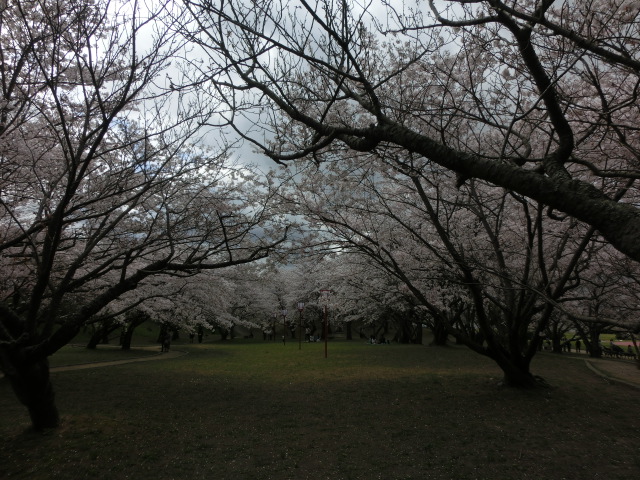
These are the photos which I took in 2009 in Yoshino Mountain where it is said that 30,000 cherry trees, including mountain cherry trees, are growing. Since the mountain is high (690 m), we can see the beautiful scene whenever we go there in the season.


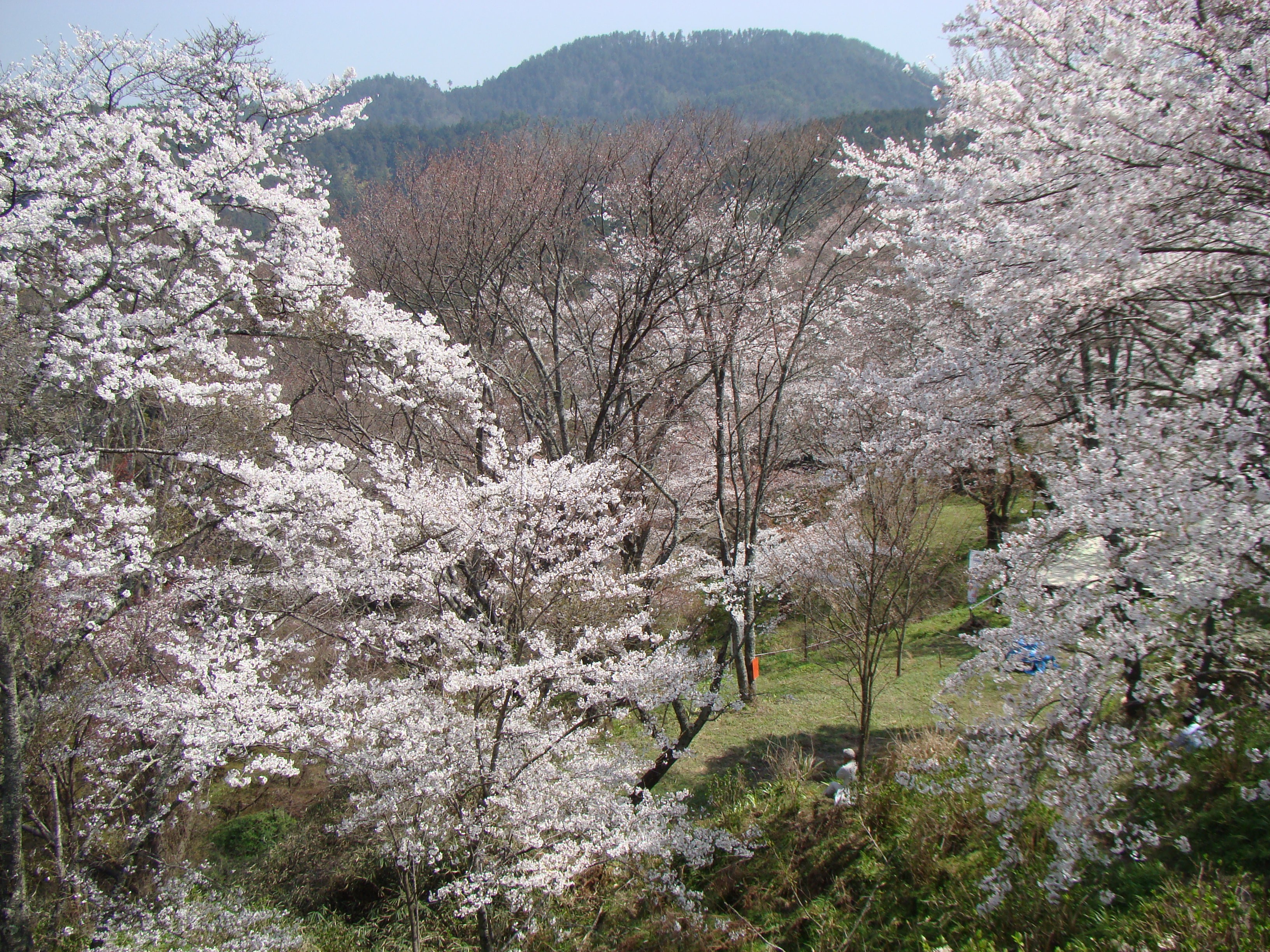
These photos of the flowers of Yokowa cherry trees were taken on April 12th 2012, which are very different from those of Someiyoshino. Yokowa is located among the mountains in the south district of Ise city where a family of the Heikes escaped from pursuers from Kyoto with it about at the end of Heian era (1185). We may feel the gorgeous atmosphere of the Heikes and read their sad story behind the beautiful flowers.


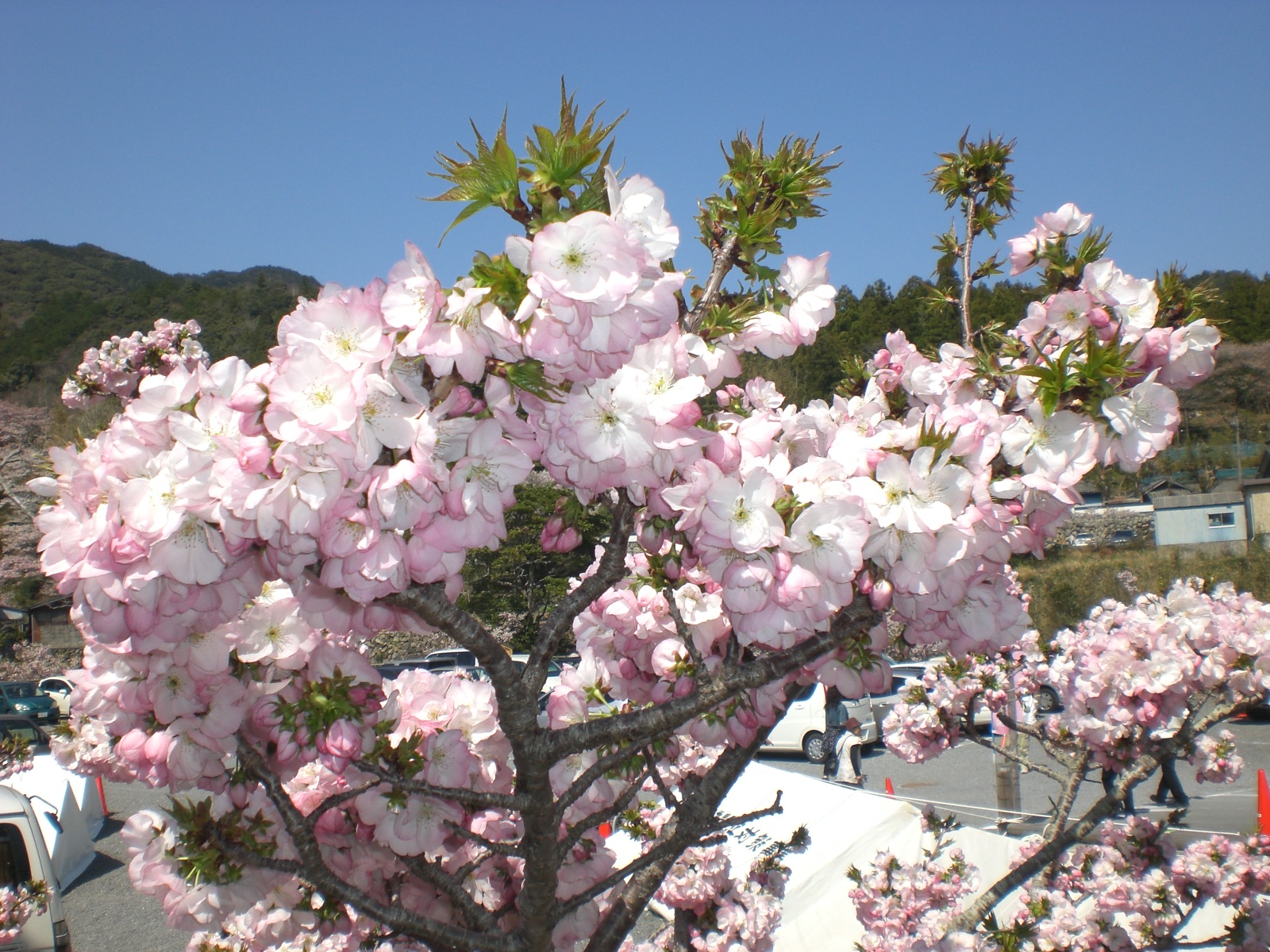
I am very lucky to see these blossoms of three cherry trees between our new and old houses. One of them has the deep pink flowers, and one of them has the pale pink ones.


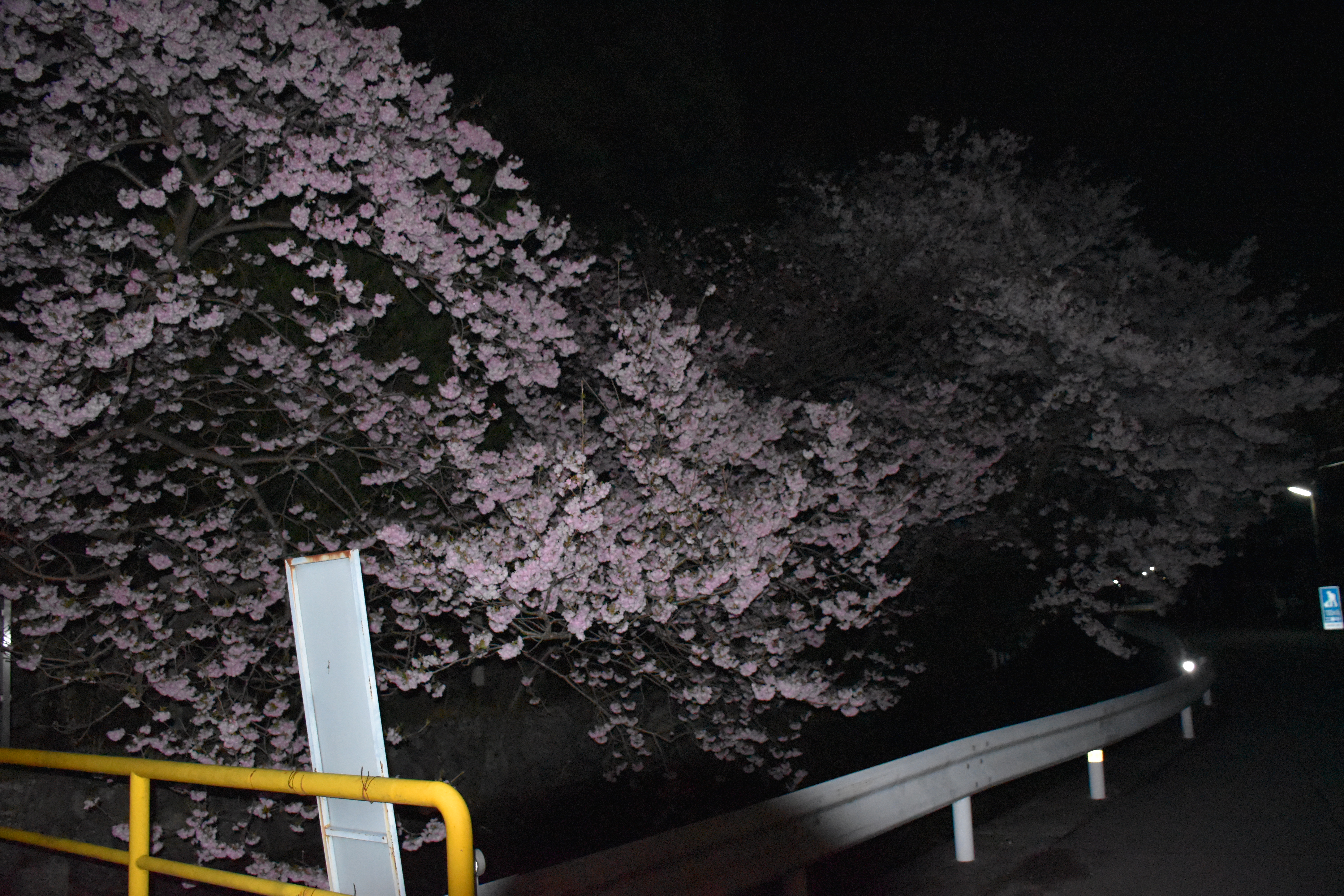
And besides, I am very happy to see the flowers of my cherry tree bonsai every year. Though these trees are called “Issai zakura” (Small-sized cherry tree) generally, the left and middle trees have the pale pink flowers, and the right tree has the deep pink flowers. These photos were taken on April 3rd 2013.


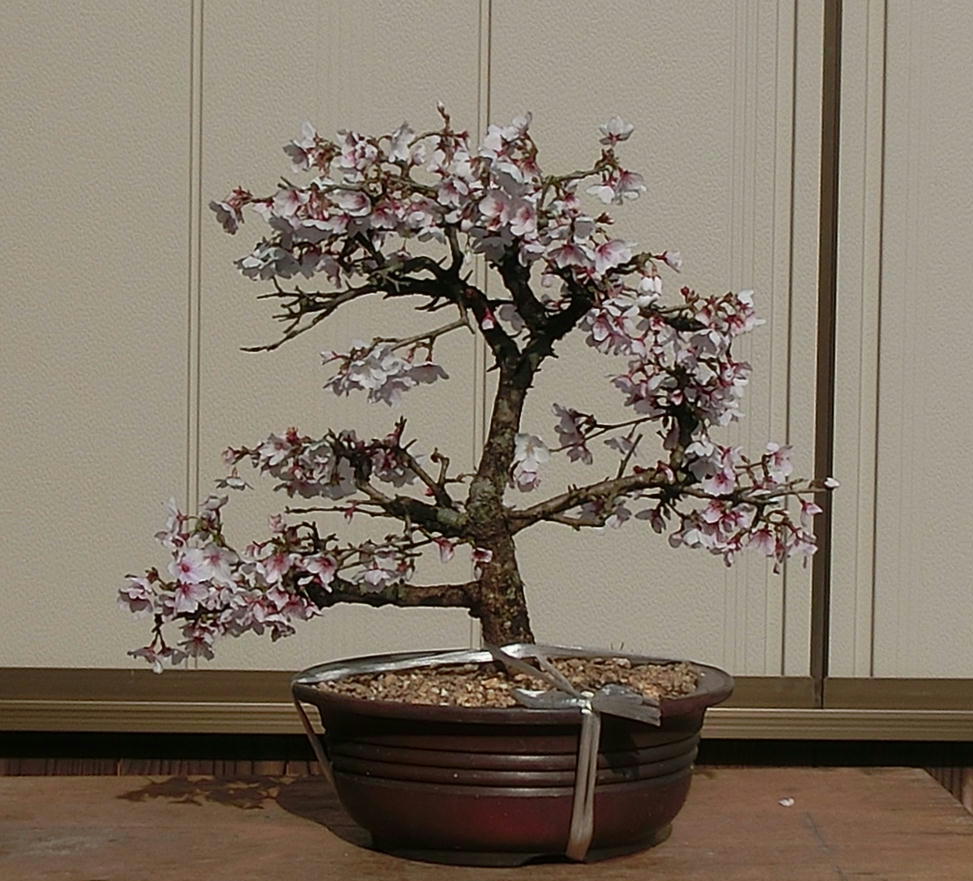
These flowers of weeping cherry trees are very gorgeous. We went seeing them in the weeping cherry tree garden on April 16th 2015, which is located between the deep mountains on the border between Mie and Nara prefectures. Since the garden was made about 15 years ago and a lot of weeping cherry trees were planted though some of them have the white flowers, all trees are young. But it is said that the number of them was more than 1,300 last year because a lot of young trees are planted every year. When we went there on April 23rd, 2014, a lot of them were finishing flowering, but last year we were much satisfied with a lot of beautiful flowers at the start of full-blooming which I have not seen in my life. A lot of flowers of weeping cherry trees are extremely beautiful. Fortunately we can see the white flowers in the right photo though other trees finished blooming white flowers. Please enjoy them.


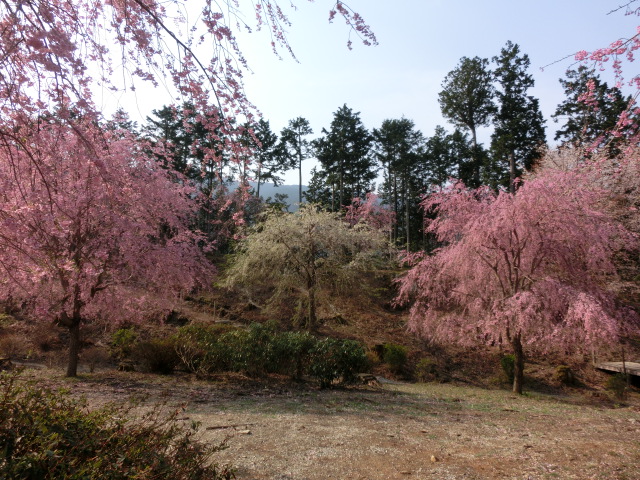
Though I think that even the oldest trees in the garden are not 20 years old, since they are given fertilisers every year and the plants under them are cut in every summer, their trunks are growing very thick. Therefore the weeping branches are so long that they can have a lot of flowers. We could not see them without sigh of admiration.


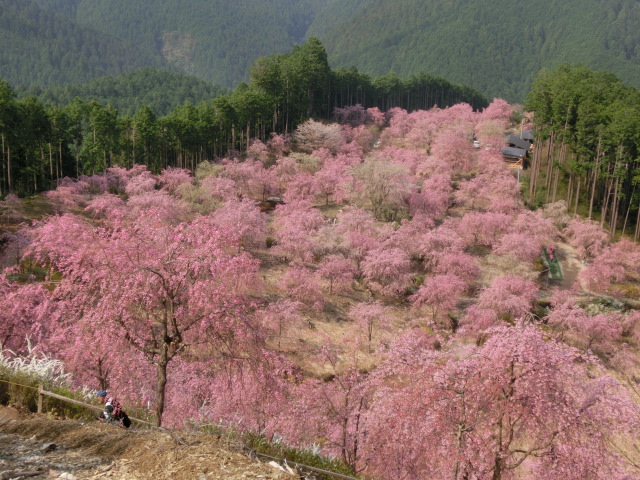
These photos are the cherry blossoms in the premises of Koggakan University. When I was a professor, we had a lot of cherry trees and could enjoy seeing beautiful cherry blossoms. But recently a lot of old cherry trees were cut to build new buildings. We went there to see them on April 4th 2016.


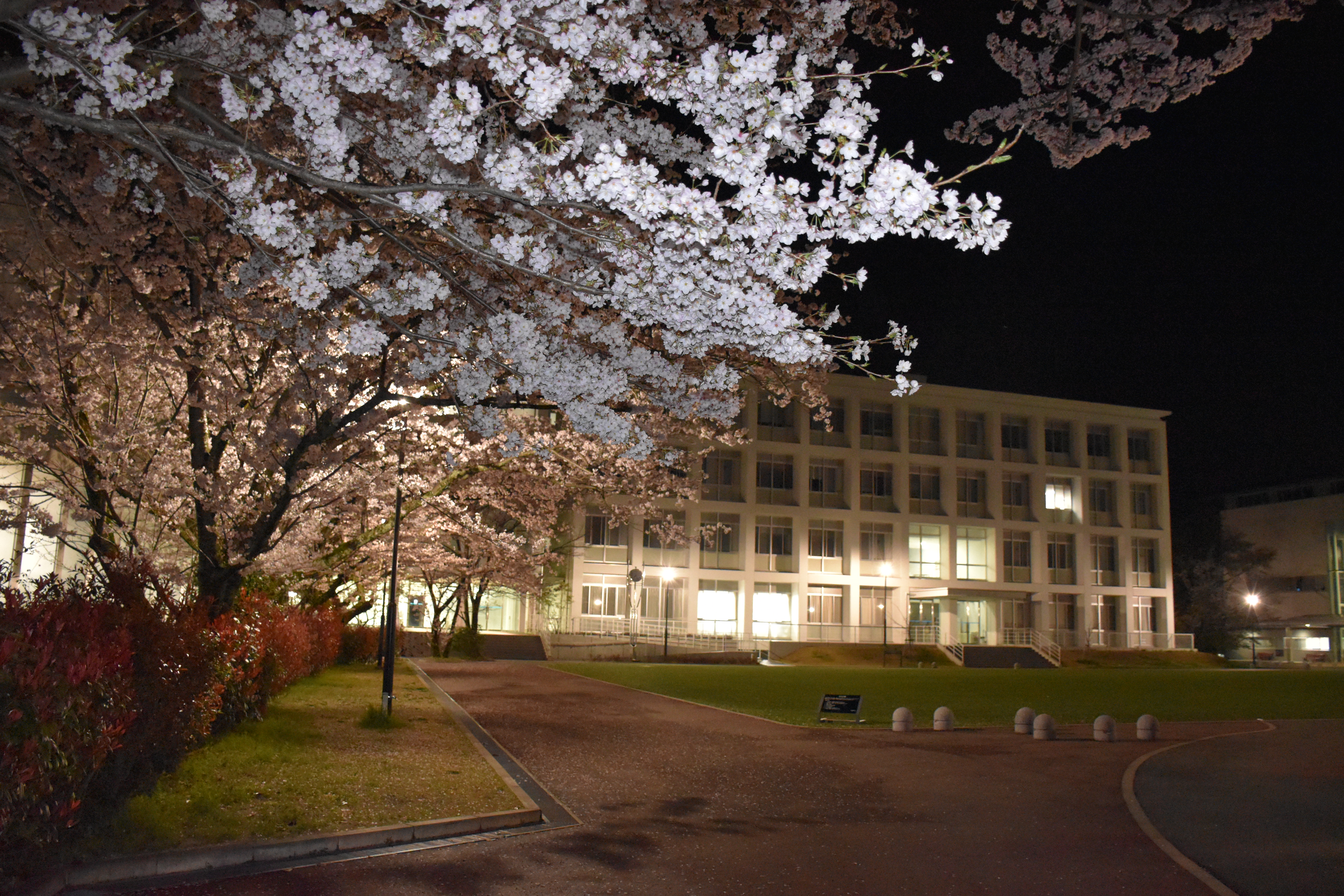
Lastly, I would like to introduce the beautiful scenes of cherry blossoms by the river of Isuzu near Naiku (Ise Grand Shrine) at night. Since I was so busy that I did not have any time to spare to go seeing cherry blossoms in the daytime, we went seeing them which were lit up this year.
Our grandchild has the name of Isuzu which comes after this river, and the name of Isuzu Motors Limited comes from this river, too, where her father (our elder son) works. It runs though Naiku whose head is in the forests of Ise Grand Shrine and we go to the main shrine to worship the Goddess after washing the hands in the river which is thought to be pure and clean.


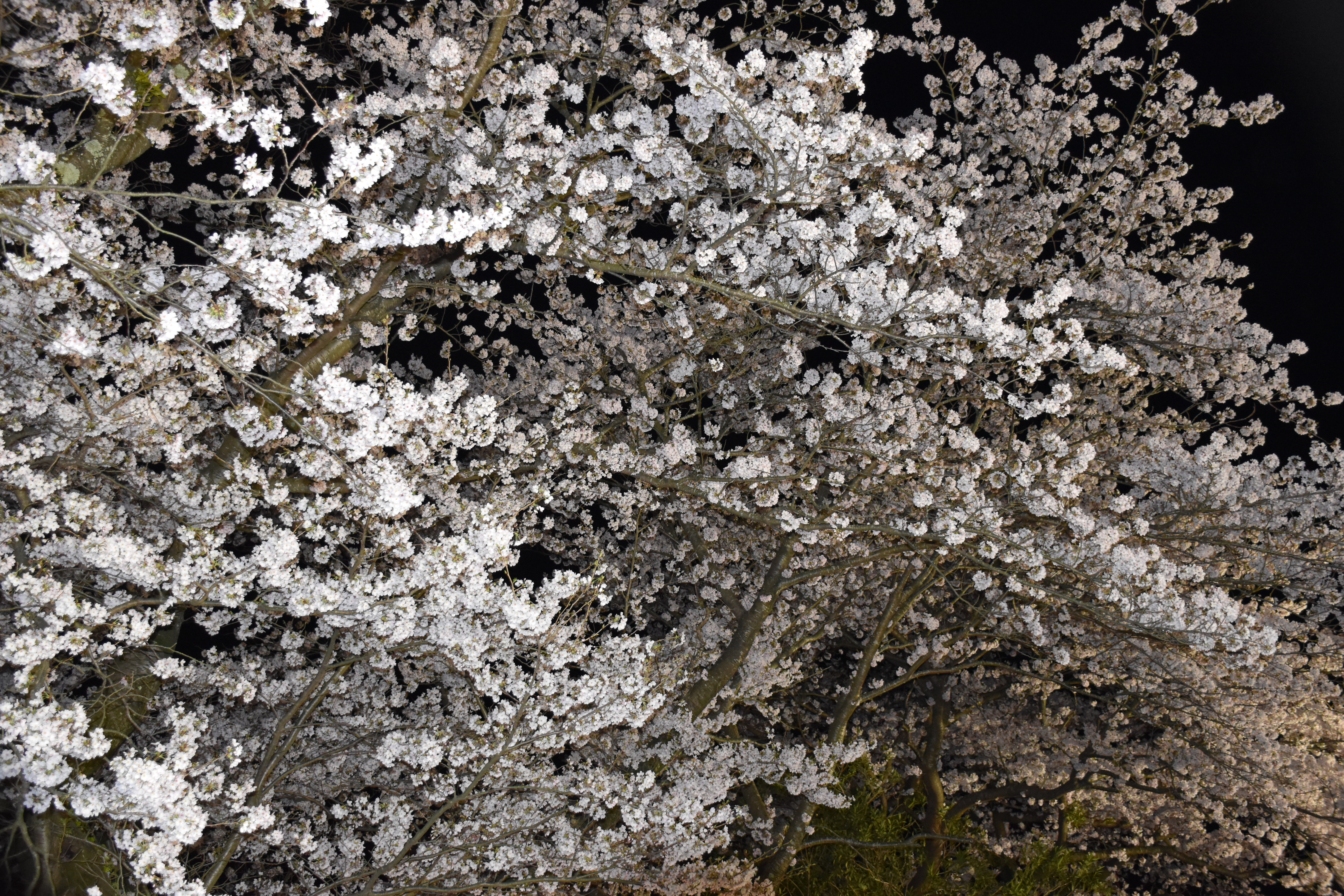
The autumnal tint of these cherry trees shows various appearances of colours between red, yellow and brown. Sometimes we can see the red and yellow in a leaf and are happy to see their beautiful autumnal tint, too.
Section 2. The calm and clear beauty of autumnal tints
A lot of Japanese feel much satisfied with the calm and clear beauty that red and yellow leaves of Japanese maple trees and other plants are making in late autumn. I think it is because we can find out some or a lot of dead leaves among them or other plants.
Now I would like to show you the remarkably beautiful photos of Japanese maple trees in several places in late autumn so that you may recognise their leaves changing of colours mainly. But here I would like to correct my error though I used the name of “mountain maple” in Europe for a long time. Mountain maples have larger leaves than Japanese maples. We can see a lot of Japanese maples in the mountains and gardens in the west and central Honshu but we can see a lot of mountain maples only in the northern part of Honshu. It is called "Mountain maple" or only “Maple” commonly in Ise and in my home town though it is a wrong name academically. And a lot of Japanese people like Japanese maple better than mountain maples because their leaves are smaller than those of mountain maple and we can plant them in the gardens, parks and along the roads because their leaves turn red or yellow in late autumn, or make them into bonsai because they can keep the good shapes.
Recently it is so warm in late autumn that the leaves of Japanese maple trees do not turn purely red or yellow. Since their change of colour depends on the districts (cold and heights above sea level), the autumnal tint front is announced by the Meteorological Agency every year. Kongobuji (the name of a great group of temples) is located in Koya town in Wakayama prefecture, whose height above sea level is about 800 m. Though we went there to warship Kukai by my car on October 9th 2010, the leaves of Japanese maple trees which were growing before the gate of main temple still were green (the left photo). I think that they would have turned red or yellow if we had visited there 50 years ago. But we can see a lot of green leaves and a small number of red ones in the same place. It is because red leaves had the sunshine longer than green leaves. The next middle and right photos were taken in the Okazaki castle on November 30th 2013 when I and my wife went to Okazaki Park to see the satsuki autumnal bonsai show by my car. This contrast between red and green colours brought me a little strange feeling.


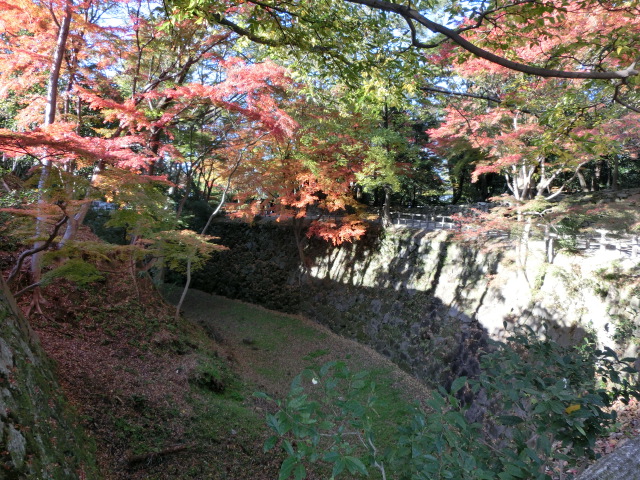
Since the autumnal tint of Japanese maple trees in Okazaki East Park was past the best time to see, the colour of red a little bit faded away. But since the autumnal tint of Japanese maple trees there is famous, they were very beautiful though we could see a lot of their fallen leaves.


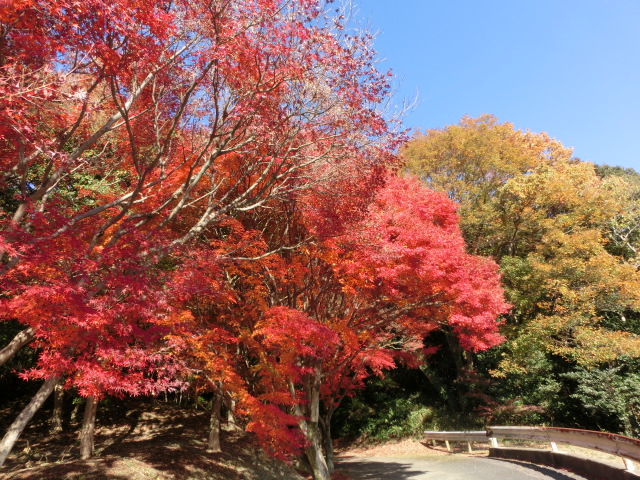
I and my wife went to Joruriji (temple) in the late afternoon of November 16th 2014, which is very famous for the statue of Kisshotennyo (the national treasurer) in Kamo town next to my home town. Though the autumnal tint of Japanese maple trees in the garden is famous, their red and yellow were not pure. I thought it was because the temperature had not fallen down yet. But they and the pond had a good contrast by the sunlight in the late afternoon.


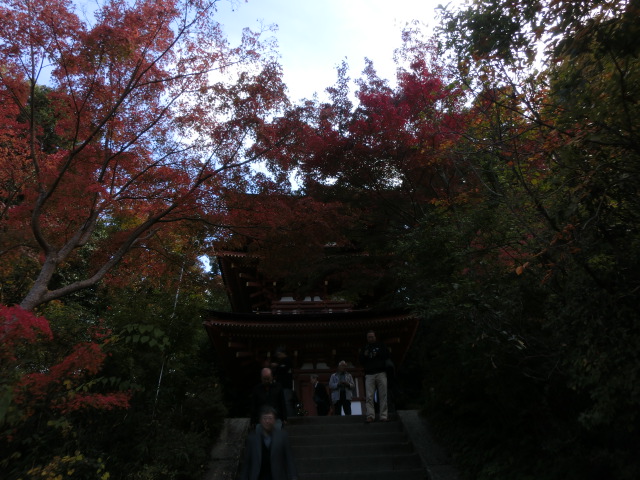
And we went to Kaijusanji (temple) in Kamo town where we had been by a long walk at my primary school days (67 years ago) to see the statue of Buddhist and five-storied pagoda in May. Perhaps they were not the national treasures at that time when it was immediately after the World War II ended. This temple is very famous not only for these national treasures but also for the autumnal tint. But since we went there before the best time to see it, some of Japanese maple had a lot of green leaves.


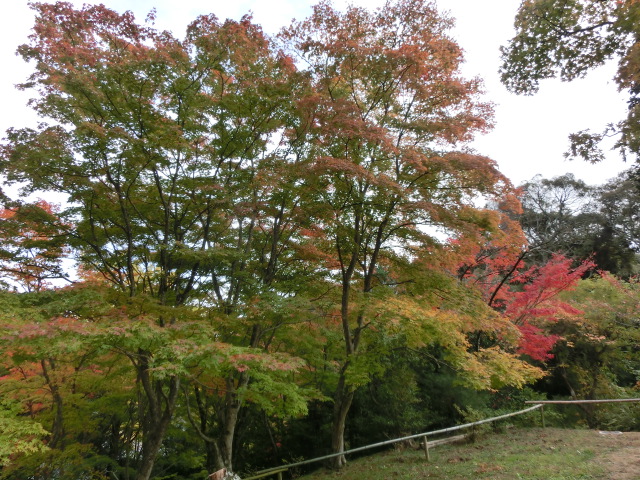
We went to Kitabatake shrine in Tsu city with a friend of mine on November 24th 2014 which is famous for the autumnal tint. But since it was past the best time to see it, we have to see a lot of fallen leaves of Japanese maple and ginkgo. Though the red and yellow leaves on the branches already faded out, they still were beautiful. And we felt dreary there a little bit when seeing fallen leaves on the ground and bare branches in the autumnal tint. Especially it was strange that a branch of Japanese maple tree had red and yellow leaves. On the way to Taiunji (temple) we could see the best scene which the red, yellow and green leaves of Japanese maple trees were making by the small river. It is said in Japan that they by the clean river can show the most beautiful autumn tint.


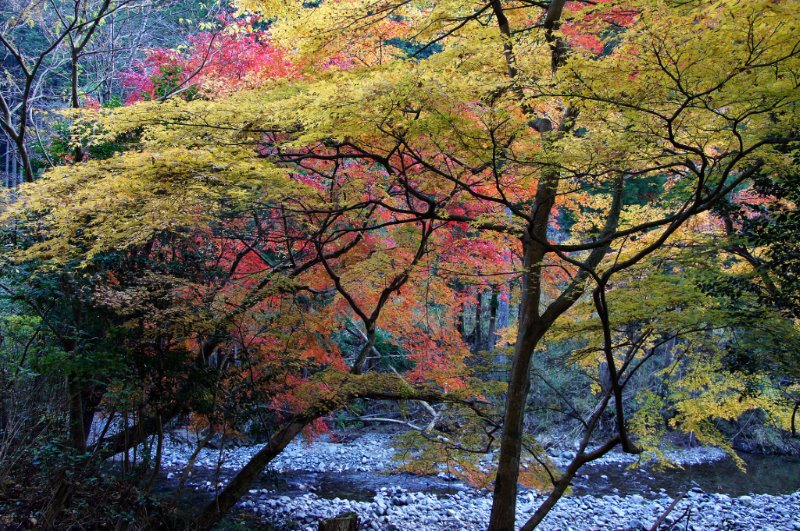
And we went to Taiunji which is famous for the autumnal tint. Since it is located a little bit inland, though the autumnal tint was past the best time to see a little bit, the leaves of Japanese maple were still very beautiful, showing the splendid contrast of red, yellow and green colours. And besides since their leaves there were smaller than those in other places, the beauty was much better than that of the average leaves.


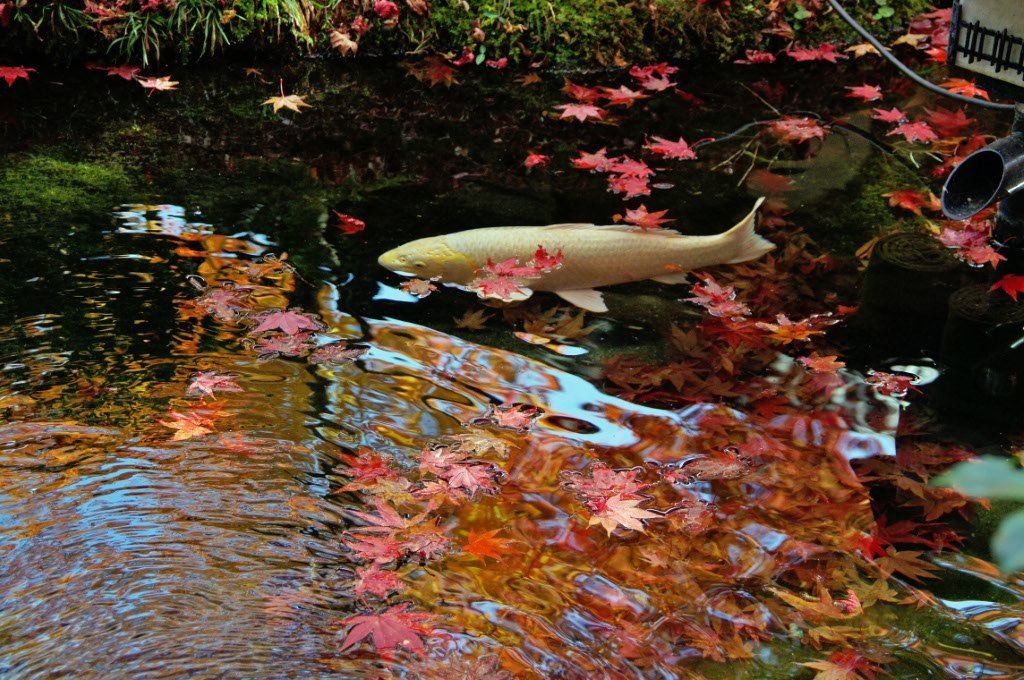
Next we went to Haze Botanical Garden where 50,000 stones are put on each place in the garden. Though it has not been kept in the very good condition, a lot of plants and stones entertain us whenever we visit it except January and February when it is closed. Of course it already was past the best time to see it and a half of Japanese maple trees did not have any leaves, but other half of them still had a lot of beautiful leaves.


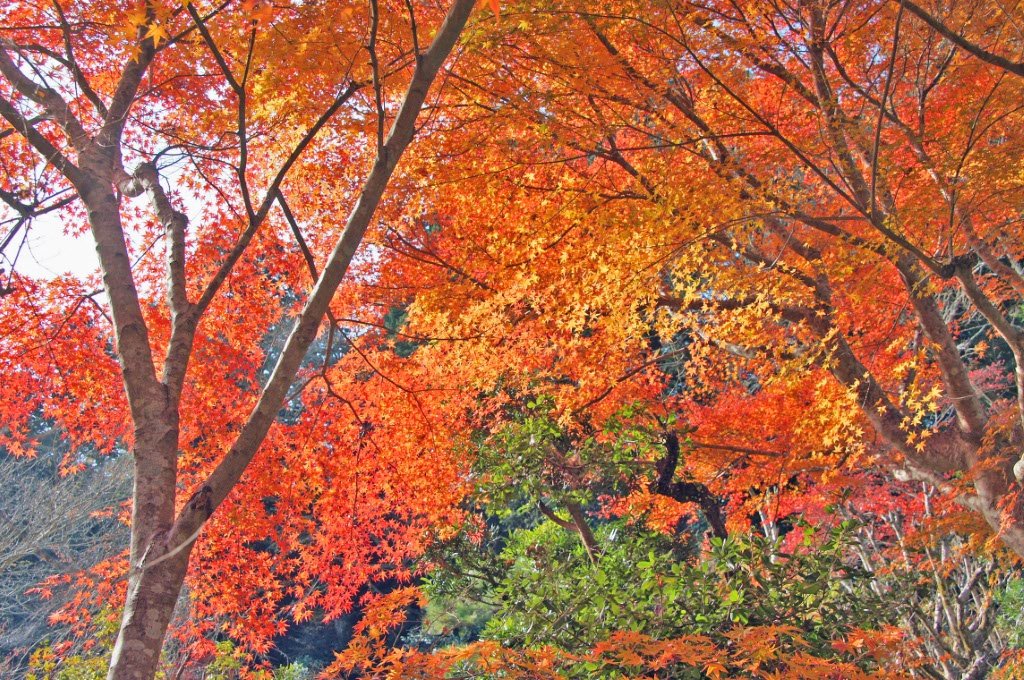
Lastly I would like to introduce the beautiful autumnal tint in Koraibiro in the forests of Ise Grand Shrine. Though the autumnal tint there is beautiful, it is not famous because the shrine never publicises the beauty. If it is publicised, a lot of people will go seeing the beautiful leaves of Japanese maple trees and make the district dirty. There is the head of the river of Isuzu which must never be polluted by any persons. The left and middle photos were taken in 2008 when it is the best time to see the autumnal tint, but the right phot was taken in 2009 when it was already past it. Since this valley is narrow and has the sunslight only for a short time, some of Japanese maple trees do not have any red leaves. And since a lot of them are growing on the both banks of the river, the contrast between the clear stream of the river and the red and yellow leaves of them is very interesting.


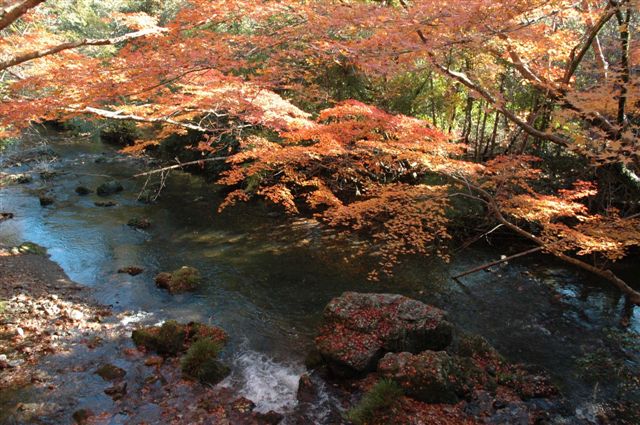
>
Though leaves of Japanese maple trees are very beautiful in autumn, it is very strange that they have only red leaves or only yellow ones or both. It is thought that it depends on the differences of conditions of growth and the individual differences.
Section 3. The mechanism of autumnal tint
Now I would like to summarise how the leaves of satsuki trees change the colours in autumn. Though a lot of leaves of trees are green in summer, it is because they have chlorophyll. And as hours of sunlight are short gradually in autumn, the chlorophyll in them is decomposed. Judging from the field of botany, it is thought the phenomena of aging. Since it in them absorbs the sunlight in summer, the photosynthesis occurs actively.
But when such deciduous trees as Japanese maple trees enter into the mid-autumn, their leaves have the phenomena of aging before winter when the condition of weather isn’t suitable for the photosynthesis. Therefore leaves of deciduous trees begin to change their colour. Why?
At first the chlorophyll in leaves is decomposed rapidly as hours of sunlight are shorter and shorter. Secondly the yellow of carotenoid appears and the leaves begin to turn yellow. This yellow of carotenoid is not seen in them form spring to summer under the influence of chlorophyll. When chlorophyll is decomposed in autumn, it can be seen. Thirdly when the temperature fell down much lower and a green pigment disappear, a red pigment of anthocyanin which isn’t contained in them from spring to summer originally happens to be formed in the process of phenomena of aging. Though the process of this mechanism makes leaves of plants have different changes of colours, it isn’t made clear why the red pigment is formed in them. But we can enjoy seeing pure red leaves of them when the temperature is high in the daytime and low at night, and they have a lot of sunlight, in other words, when fine autumnal days continue and the difference in temperature is great. And they are much more beautiful when we have a lot of rain in summer and autumn.
In this process the mechanism of photosynthesis is decomposed and the nutrition which has been stocked up in the leaves is restored to the trunk. Therefore trunks grow thicker. As the nutrition is sectored from them, abscisson layers begin to form at the bottoms of petiole by an action of ethylene which is a kind of plant hormones, and leaves of deciduous trees are cut off from the branches gradually. These leaf falls mean to protect them from a waste of water and energy in winter.
At the same time, though a lot of leaves of plants have the system in which they protect themselves from the damage of sunlight by a yellow pigment of carotenoid and so on in autumn, since various molecules, containing carotenoid, are decomposed in the phenomena of aging of leaves, deciduous trees have to protect their leaves from the damage of sunlight even while leaves are making this progress, that is, they are changing the colours. And the colours of leaves fade out and they fall down from the branches.
Section 4. Why do some satsuki trees have the mutlicoloured leaves in autumn?
Now I would like to think why some satsuki trees have the mutlicoloured leaves in autumn. They are not only beautiful but also make us think why the green leaves turn multicoloured. When seeing several multicoloured flowers which a satsuki tree has, a lot of people are deeply impressed by the beautiful flowers and wonder why the tree has such flowers.
Satsuki trees are a kind of semi-deciduous trees. Therefore it is natural that all spring leaves fall down from the branches after the autumnal tint. And though a lot of satsuki trees keep some summer leaves near the flower buds, other summer leaves change the colour and fall down from the shoots after the autumnal tint. And, of course, a lot of semi-deciduous trees have the mechanism of autumnal tint in the leaves, but some varieties of satsuki trees have not only this mechanism of autumnal tint but also other phenomena of changing colours of all leaves or never have it under the different conditions to grow.
A. All leaves of some varieties of satsuki continue to have the autumnal tint in winter.
Generally speaking, though a lot of satsuki and Japanese azalea trees have the autumnal tint, the leaves by and near the flower buds are green. But some of them continue to have the red leaves in winter, and besides these red leaves will be green in the next spring. This representative variety of satsuki is Yata no kagami. Though I had it about 25 years ago, I am sorry that I do not have even photos now. These leaves of Kurofune (Japanese azalea) whose all spring leaves and about a half of summer leaves already fell down are not pure red in winter. I think it is because that I continued to give a lot of fertilisers and water. But since these flower buds are red, too, this whole figure is beautiful. These photos were taken on December 12th, 2015.

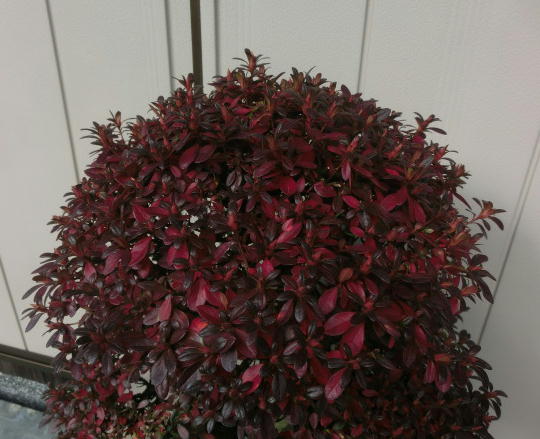
B. All summer leaves of saplings of some varieties continue to be green through autumn and winter.
If we gave a lot of fertilisers and water to saplings or young trees, a lot of varieties of satsuki trees do not change the colour of the mummer leaves in autumn. And I think that these summer leaves are so strong and healthy because they had a lot of rain in the previous summer, were given a lot of fertilisers through the year and it was very warm in the previous autumn that they have not received any mechanism of autumnal tint. Judging from this fact, we can understand easily that the mechanism of autumnal tint is a kind of phenomena of aging, and that a lot of young strong trees of satsuki never stop growing even in winter if they are kept in greenhouses or rooms. Therefore since growers of satsuki trees keep cuttings in the greenhouses, they can get very long saplings (more than 80 cm) within two years.
I have a lot of saplings and young trees of satsuki now. And more than a half of them had the mechanism of autumnal tint and their coloured leaves fell down by the middle of January. But all five trees of Jukokan did not have the autumnal tint last autumn, that is, their summer leaves did not change the colour.
When these photos were taken on December 26th, the tree of left photo had a lot of green leaves. Though we can see two brown leaves on the soil in the pot, they were spring ones which fell down from shoots after the autumnal tint. Watch the middle photo of the same tree, and you can see some very young leaves whose colour is not deep green but pale green. Since it was very warm last November and December, they never stopped growing constantly. Seeing the right photo of other Jukokan, you can understand that the condition of these two trees was the same.
It is very dangerous that the very young leaves of satsuki trees have some thick frosts in December. It is because they have great damages from them, are burned and die. Therefore it is said that we must not give fertilisers to satsuki trees in the late autumn. We had the first thin frost on November 28th in Ise. And we could see the next thin frost on December 8th. The day when we saw the thick frost on them was 20th. It is a surprise that this thick frost did not give a great damage to the very young new leaves of Jukokan.


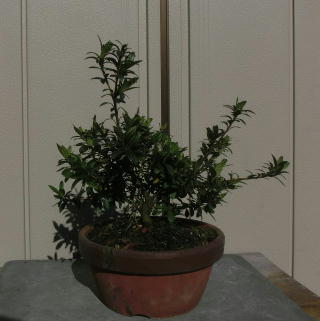
The tree of these photos which were taken on December 26th is 7 years old Benigasa. Seeing it from the front side (the left photo) it does not have any coloured leaves. But seeing it from back side (the right photo), it has several coloured leaves, of course, though it is fact that almost leaves of autumnal tint fell down from shoots last January. But it still has a lot of strong and large leaves. I think that this young Benigasa is one of the trees which had a very sensitive reaction against the very abnormal weather in summer and autumn of 2015 because it is a young tree. And other 11 trees of Benigasa have the same condition.

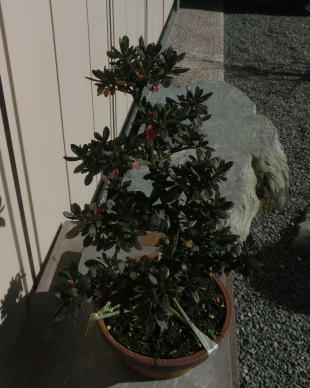
But two young tree of Benigasa had a perfect autumnal tint because I had not repotted them last June, the soil in the pots is hard and they are weak. Though I had thought that I had given them to one of my friends when they had begun to have flowers, they were returned to me last August. It was too late to repot them. Therefore it takes the water a long time to sink down into the soil now.

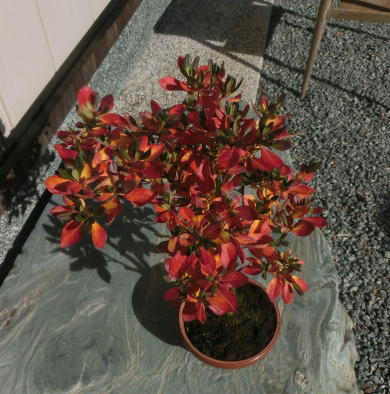
Comparing the strong young Benigasa with the weak young one, you can understand easily that this difference of autumnal tint is caused from the different conditions to grow. In fact, you cannot see the beautiful autumnal tint of satsuki trees in the late autumn if you gave them a lot of fertilisers.
C. Connection between the autumnal tint and the colours of flowers
I am sorry to tell you that the connection between the autumnal tint and the colours of flowers has not been made perfectly clear academically yet. According to my long experience, if leaves of satsuki trees are yellow in autumn, it seems that the shoots which have them will have not only white flowers but also red flowers, including pink ground, and if shoots have red leaves in autumn, they will have red flowers, white throat and fukurin (white jewel border). And if a shoot has red-striped leave near the flower bud, it will have a red-striped flower.
If the new shoots of Kogetsu are red in spring, they will have only fukurin but won’t have any red flowers. And the green new shoots will have red, white and red-striped flowers. I think that if this variety does not have a lot of red flowers and fukurin the colour arrangement is very beautiful. And if we do not continue to remove a lot of shoots of red flowers and fukurin, the tree will be apt to have a lot of them. Therefore though we can remove the red shoots in spring, since we cannot distinguish between the shoots of red, white and red-striped flowers in spring, we have to remove a lot of shoots which had red flowers after blooming.
For example, the left photo is Kogetsu, which was taken on June 2nd, 2012. It has more fukurin and white throat than it has on the right photo which was taken on May 31st, 2013. I removed the shoots which had these fukurin and white throat when I pruned it after blooming. Which would you like to prefer, the former or the latter?

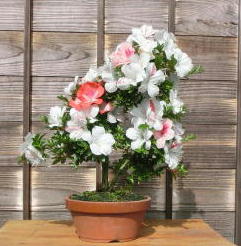
The left photo is the front side of the above Kogetsu, which was taken December 22nd, 2015. The middle photo is the back side and the left photo is the view from the above. Though this tree does not have a strong autumnal tint because I continue to give it a lot of fertilisers, the colour contrast of leaves is considerably good. But you cannot see any red-striped leaves.


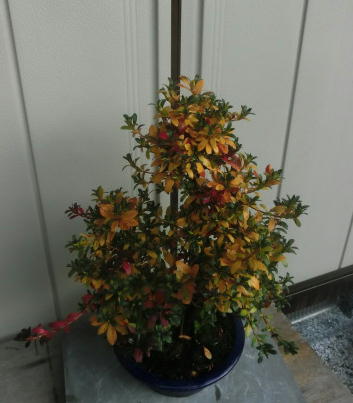
I am sure that, if a shoot of Asuka has red-striped leaves in autumn, it will have a pink-striped flower in the next spring. But though the colour contrast of autumnal tint is considerably good, you cannot see any red-striped leaves on the left and middle photos clearly which were taken on December 15th, 2015, neither. It is because I continue to give it a lot of fertilisers. Of course, it is because this Asuka has several pink-striped flowers that I have grown it though it does not have a good shape of trunk. Since I have lessened the number of pink flowers and fukurin, you can see a beautiful arrangement of these multi-coloured flowers on the right photo which was taken on May 25th, 2013.


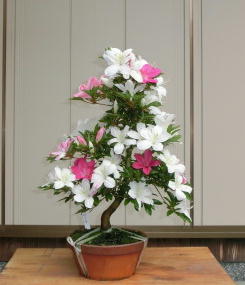
I would like to introduce the strange tree which is the natural seedling. Therefore it does not have any name of variety. I found it out under Matsukagami in the nursery about 17 years ago. Though this is a five-trunked tree now, one back trunk died about 10 years ago. And I have grown a new shoot into the fifth trunk. Watch the white flowers of left front trunk on the left photo which was taken on May 31st 2013 and you can distinguish them as some deep cleft and fringed petals. These are some kinds of shapes of Namishibuki. And other trunks have normal flowers. It is a fact that I had the variety of Namishibuki about 17 years ago, but it was put on the bonsai shelf.
But watch the autumnal tint of middle and left photos which were taken on December 10th 2015. The left front trunk has some red leaves which mean fukurin because the left back trunk has only red leaves and have fukurin. Therefore I can hope that it will have a fukurin this season and that it may have a red flower or flowers in the near future. It is because the right front trunk has a red flower and a red flower bud though it has only yellow leaves in autumn. And since the central trunk have several red leaves, it has some fukurin. It is very interesting and pleasant to compare the autumnal tint of satsuki trees with the colours of their flowers.


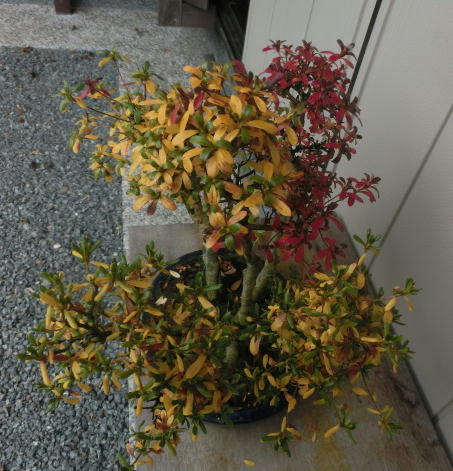
Lastly I will show you the red-striped leaf of Nikko whose photo was taken on December 15th 2015. It is the only one photo of red-striped leaf that I took last year. This autumnal tint means that this Nikko has all colours of the variety. Therefore when I can see only one red-striped leaf on the branch of multi-coloured satsuki trees, I am very happy.
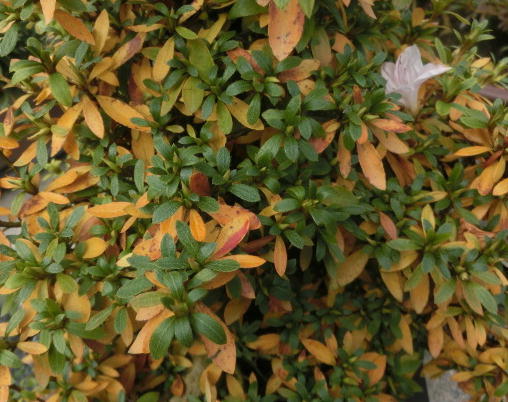
The archives
The archaives are the back nukmbers of my homepage. If you are interested in them, please read them. I am sure that it is very useful for you to grow satsuki trees and to make them into good bonsai.
If you would like to understand what Mack is a little more, please click here.
If you have any suggestions or impressions about my home page, please send your e-mail about them to my e-mail address.
Then I will
surely answer them.